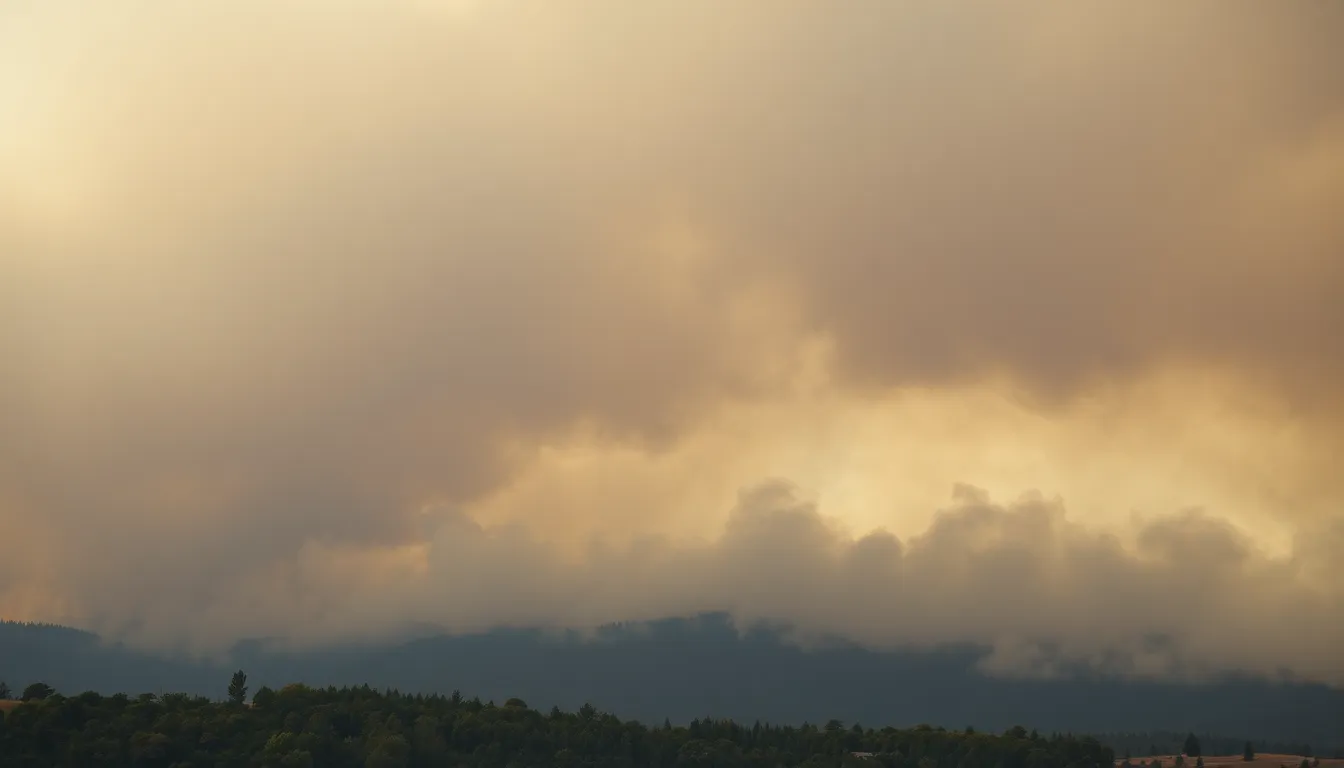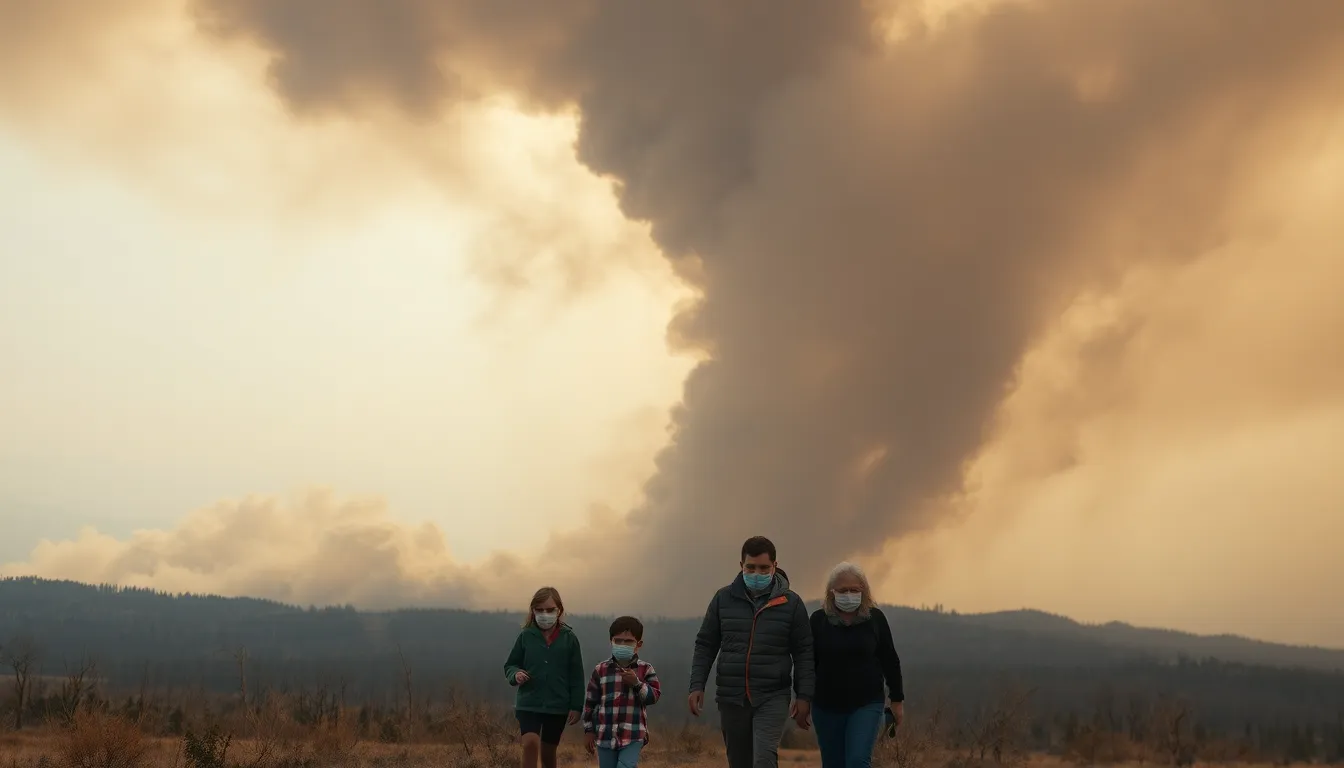A long cloud of smoke has captured the attention of many, sparking curiosity and concern across various communities. This phenomenon, often linked to wildfires and industrial activities, raises questions about air quality and environmental impact. As the smoke drifts through the atmosphere, it carries with it not just pollutants but also a sense of urgency for action.
Recent reports from reputable sources like The New York Times highlight the growing prevalence of these smoke clouds and their implications for public health. They serve as a stark reminder of the challenges posed by climate change and the need for effective solutions. Understanding the sources and consequences of this smoke is crucial for communities striving to protect their air quality and overall well-being.
Table of Contents
ToggleOverview of Long Cloud of Smoke NYT
Long clouds of smoke primarily arise from wildfires, industrial accidents, and agricultural practices. These dense smoke formations travel vast distances, impacting air quality and visibility. Reports from The New York Times indicate that regions affected by these smoke clouds often experience significant health risks.
The particulate matter contained in smoke can lead to respiratory issues, cardiovascular diseases, and other health complications, particularly among vulnerable populations such as children and the elderly.
Data shows that the frequency and intensity of smoke clouds have increased due to climate change, resulting from higher temperatures and prolonged droughts. Studies reveal that wildfire season has lengthened, contributing to more smoke events and subsequent public health alerts.
Understanding the origins of long smoke clouds aids in developing mitigation strategies. Communities can implement better monitoring systems and improve emergency response plans to protect residents from the dangers of smoke exposure.
Key Themes Explored

The article delves into several critical themes surrounding the phenomenon of smoke clouds, particularly their environmental and health implications.
Environmental Impact
Smoke clouds can significantly compromise air quality, stemming from sources like wildfires and industrial activities. These dense formations carry pollutants over vast distances, leading to ecosystem disruptions. The increase in smoke incidents correlates with escalating climate change effects, such as rising temperatures and prolonged droughts. Such changes threaten biodiversity, diminishing both plant and animal life. Reports indicate that areas exposed to frequent smoke suffer from reduced agricultural productivity, as crops face both physical damage and compromised growth conditions.
Health Concerns
Smoke exposure presents substantial health risks, particularly for vulnerable groups like children and the elderly. The particulate matter present in smoke can lead to severe respiratory issues, including asthma exacerbations and chronic bronchitis. Additionally, exposure increases the risk of cardiovascular diseases. As highlighted in The New York Times, the long-term health effects of smoke inhalation necessitate urgent attention from public health officials. Strategies to mitigate these risks include developing effective communication about air quality and implementing safeguarding measures during elevated smoke events.
Analysis of Coverage
The coverage of smoke clouds reveals critical issues surrounding air quality, public health, and environmental concerns. Various journalistic approaches shed light on these pressing matters while also indicating how readers respond to the information presented.
Journalistic Approach
The New York Times employs a detailed journalistic approach, utilizing data-driven reporting to provide context about the factors contributing to smoke clouds. Reports incorporate interviews with environmental scientists, public health officials, and affected individuals. This multi-faceted perspective enhances the narrative, allowing readers to understand both the immediate impacts and long-term implications of smoke exposure. By integrating scientific research with personal stories, the coverage fosters a comprehensive understanding of the issue, urging readers to recognize the urgent need for action.
Reader Reception
Reader reception of these articles indicates a strong public interest in environmental topics, particularly regarding health implications. Surveys conducted by media outlets show that a significant portion of the audience expresses concern for vulnerable populations affected by smoke exposure. Readers often engage with articles through comments and social media, sharing personal experiences and advocating for better air quality measures. This interaction reflects a heightened awareness of the issue, with many readers seeking ways to protect themselves and their communities from the health risks associated with smoke clouds.
Comparisons with Previous Articles
Recent discussions on smoke clouds reflect patterns observed in earlier reporting. Analyzing these patterns reveals both similarities and differences in the coverage.
Similar Events
Similar events have frequently emerged in recent years, showing a rise in smoke clouds related to wildfires, industrial activities, and agricultural burns. Previous articles noted alarming incidents, such as the 2020 West Coast wildfires, which produced extensive smoke that traveled across the continental United States. Reports consistently highlight the interplay between increased emissions and environmental conditions, especially during drought seasons. Additionally, instances of smoke dispersion impacting air quality and public health have surfaced repeatedly, confirming a trend of growing concern. Past analyses emphasized the health implications for vulnerable populations, particularly during peak smoke events.
Differences in Reporting
Differences in reporting methods have evolved, with recent articles employing enhanced data visualization techniques and interactive maps that improve reader comprehension. Earlier reports relied heavily on anecdotal evidence and limited scientific data. Current articles include robust interviews with experts in environmental science and public health, offering deeper insights. The New York Times has transitioned to more comprehensive coverage, incorporating real-time data on air quality indices and immediate health advisories. This shift reflects a greater awareness of the urgency surrounding smoke exposure and its long-term impacts. Enhanced reader engagement through social media platforms has evolved, allowing for a more direct dialogue between the public and experts, fostering a community-focused approach to tackling air quality issues.
The rising prevalence of smoke clouds poses significant challenges to air quality and public health. As communities grapple with the consequences of these dense smoke formations, the need for effective strategies becomes increasingly urgent. Addressing the health risks associated with smoke exposure is essential for protecting vulnerable populations and ensuring a healthier environment.
With heightened awareness and engagement from the public, there’s an opportunity to advocate for better air quality measures. As reporting evolves to include real-time data and community-focused approaches, it’s crucial for individuals and officials alike to collaborate in safeguarding air quality. By understanding the sources and impacts of smoke clouds, communities can work towards minimizing their harmful effects and enhancing overall well-being.



